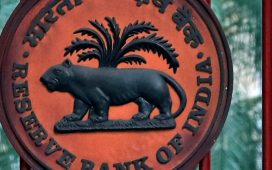“For the first time, UK agreed to take binding commitment to provide non-discriminatory treatment to our suppliers under UK’s Social Value regime in their public procurement system,” the official said.
Under the UK’s Social Value law, the British government departments require public authorities to have regard to economic, social and environmental well-being in connection with public services contracts.
According to the UK government, the trade pact will give UK businesses “unique and unprecedented” access to India’s public procurement market, comprising about 40,000 tenders with a value of at least 38 billion pounds a year.
On the other hand, India has agreed to allow British companies to participate in public procurements only in the non-sensitive sectors.
The UK firms, however, will not be allowed to participate in procurements by state government entities and local bodies. “UK-based suppliers would be allowed to bid for domestic tenders above the agreed thresholds (above Rs 200 crore) as deemed Class II local suppliers under public procurement. Carve out is also provided for India’s ‘Make in India policy‘ as well as medium and small enterprises.
Earlier, India opened the government procurement segment in the comprehensive trade pact with the UAE. Under that pact, UAE firms are allowed to participate in procurement tenders worth over Rs 200 crore.
In 2020, the government modified public procurement norms to give maximum preference to companies whose goods and services have 50 per cent or more local content to promote ‘Make in India’.
The revised Public Procurement (Preference to Make in India), Order 2017, has introduced a concept of Class-I, II and non-local suppliers, based on which they will get preference in government purchases of goods and services.
Class-I local suppliers will get the most preference in all government purchases because their domestic value addition is 50 per cent or more. They will be followed by Class-II suppliers, whose value addition range is more than 20 per cent but less than 50 per cent.
India’s government procurement market is one of the largest in the world and it is estimated at nearly USD 600 billion annually, or approximately 15 per cent of the country’s GDP, as per estimates.
This expenditure fuels development across infrastructure, healthcare, power, education, transport, and defence.
However, GP is more than a budgeting tool as it is a critical industrial policy instrument, used to promote local manufacturing, build MSME capacity, and advance national programs like Make in India and Atmanirbhar Bharat.











